Protected: 2023 IPR Bridge Conference: Attendee Materials
This content is password protected. To view it please enter your password below: Password: ...
Read More...This content is password protected. To view it please enter your password below: Password: ...
Read More...
 On Jan. 25, 2023, Gallup Poll released the results of its annual Q12 survey, which measures and tracks employee engagement from 50 countries. The 2022 Q12 survey results depict a grim reality for US employers. The survey found that employee engagement in the US has decreased significantly since 2020, marking the first annual decline in a decade. This decrease in engagement was particularly notable among young, female, and remote-ready on-site employees (Harter, 2023).
Employee engagement has been a buzzword in organizational management for the past 30 years. In recent years, organizational and internal communication scholars have also placed a significant emphasis on the importance of employee engagement, linking effective leadership, symmetrical employee communication, and positive employee-organization relationship qualities with employee engagement.
Organizational psychology scholars generally agree that employee engagement means an activated, passionate, and motivated psychological state of employee that drives discretionary effort, that is, willingness to give extra effort. Engaged employees demonstrate a high level of participation in work-related activities that are typically outside their formal job responsibilities. They are employees who volunteer for a committee, stay after hours to complete unfinished tasks, show up at organization-sponsored events outside of work hours, and enjoy spending time with colleagues outside work.
According to Gallup, the most significant decline in employee engagement since its pre-pandemic record high in 2019 to 2022 was observed in the areas of clarity of work expectations, connection to the organization’s mission or purpose, opportunities for learning and growth, opportunities to utilize one’s strengths, and feeling valued and supported at work.
Gallup’s employee engagement questions, aka Q12, measure employee responses on topics ranging from a clear understanding of role expectations at work, organizational and interpersonal support for work, professional growth, autonomy, and value fulfillment.
While Gallup Q12 is called the employee engagement scale, it does not measure employee engagement. Instead, it is a scale that measures workplace environment and leadership qualities that might predict employee engagement (See the full Q12 scale here). So, the 2022 Gallup Q12 survey findings indicate that US employers fail to drive employee engagement, particularly in the abovementioned areas.
In 2022, US media outlets reported on a phenomenon called quiet quitting, which gained widespread attention after trending on social media. Quiet quitting describes an employee attitude that rejects “the idea that work should be at the central focus of their life…. the expectations of giving their all or putting in extra hours (Zenger & Folkman, 2022, para 1). By definition, quiet quitting is the opposite of employee engagement, as it describes the refusal to exert discretionary efforts beyond what is outlined in the job description.
Quiet quitting is nothing new, as the media have made it out to be. In their Harvard Business Review article, Zenger and Folkman (2022) called quiet quitting a new name for an old behavior.While organizations lament the emergence of quiet quitting behaviors in their workforce, scholars point out that quitting is often a response to an unsupportive work environment and unsustainable expectations. For example, using data from their 360-degree leadership assessments gathered since 2020 on 2,801 managers, Zenger and Folkman (2022) analyzed the drivers of quiet quitting behaviors among employees, focusing on two factors: the manager’s ability to balance achieving results with concern for others’ needs, and work environment. They found that ineffective managers were three or four times more likely to have quiet quitters in their teams.
The reality of the emerging workforce is that the majority of Gen X, Millennials, and Gen Z employees view quiet quitting as drawing healthy work-life boundaries. In other words, the so-called “quiet quitting” is here to stay. So, what can organizations do to increase employee engagement? Can employee engagement be sustainable? If quiet quitting is a response to an unsupportive workplace and unrealistic expectations for employees to be always ON at work, perhaps the answers to these questions are somewhere from conducting work environment audits, listening to employees, and setting the right role expectations appropriate for the compensation, respecting employees’ need to disconnect from work to recharge, and encouraging a healthy work-life balance.
In conclusion, to sustain employee engagement, organizations must adapt to the changing attitudes of the emerging workforce, particularly among Gen Z and Millennial employees. This includes reevaluating traditional engagement strategies, such as recognitions and rewards, and redefining engagement in the context of organizational characteristics.
References:
Harter, J. (2023, January 25). U.S. employee engagement needs a rebound in 2023. Gallup. https://www.gallup.com/workplace/468233/employee-engagement-needs-rebound-2023.aspx?utm_source=google&utm_medium=rss&utm_campaign=syndication
Zenger, J. & Folkman, J. (2022, August 31). Quiet quitting is about bad bosses, not bad employees. Harvard Business Review. https://hbr.org/2022/08/quiet-quitting-is-about-bad-bosses-not-bad-employees
On Jan. 25, 2023, Gallup Poll released the results of its annual Q12 survey, which measures and tracks employee engagement from 50 countries. The 2022 Q12 survey results depict a grim reality for US employers. The survey found that employee engagement in the US has decreased significantly since 2020, marking the first annual decline in a decade. This decrease in engagement was particularly notable among young, female, and remote-ready on-site employees (Harter, 2023).
Employee engagement has been a buzzword in organizational management for the past 30 years. In recent years, organizational and internal communication scholars have also placed a significant emphasis on the importance of employee engagement, linking effective leadership, symmetrical employee communication, and positive employee-organization relationship qualities with employee engagement.
Organizational psychology scholars generally agree that employee engagement means an activated, passionate, and motivated psychological state of employee that drives discretionary effort, that is, willingness to give extra effort. Engaged employees demonstrate a high level of participation in work-related activities that are typically outside their formal job responsibilities. They are employees who volunteer for a committee, stay after hours to complete unfinished tasks, show up at organization-sponsored events outside of work hours, and enjoy spending time with colleagues outside work.
According to Gallup, the most significant decline in employee engagement since its pre-pandemic record high in 2019 to 2022 was observed in the areas of clarity of work expectations, connection to the organization’s mission or purpose, opportunities for learning and growth, opportunities to utilize one’s strengths, and feeling valued and supported at work.
Gallup’s employee engagement questions, aka Q12, measure employee responses on topics ranging from a clear understanding of role expectations at work, organizational and interpersonal support for work, professional growth, autonomy, and value fulfillment.
While Gallup Q12 is called the employee engagement scale, it does not measure employee engagement. Instead, it is a scale that measures workplace environment and leadership qualities that might predict employee engagement (See the full Q12 scale here). So, the 2022 Gallup Q12 survey findings indicate that US employers fail to drive employee engagement, particularly in the abovementioned areas.
In 2022, US media outlets reported on a phenomenon called quiet quitting, which gained widespread attention after trending on social media. Quiet quitting describes an employee attitude that rejects “the idea that work should be at the central focus of their life…. the expectations of giving their all or putting in extra hours (Zenger & Folkman, 2022, para 1). By definition, quiet quitting is the opposite of employee engagement, as it describes the refusal to exert discretionary efforts beyond what is outlined in the job description.
Quiet quitting is nothing new, as the media have made it out to be. In their Harvard Business Review article, Zenger and Folkman (2022) called quiet quitting a new name for an old behavior.While organizations lament the emergence of quiet quitting behaviors in their workforce, scholars point out that quitting is often a response to an unsupportive work environment and unsustainable expectations. For example, using data from their 360-degree leadership assessments gathered since 2020 on 2,801 managers, Zenger and Folkman (2022) analyzed the drivers of quiet quitting behaviors among employees, focusing on two factors: the manager’s ability to balance achieving results with concern for others’ needs, and work environment. They found that ineffective managers were three or four times more likely to have quiet quitters in their teams.
The reality of the emerging workforce is that the majority of Gen X, Millennials, and Gen Z employees view quiet quitting as drawing healthy work-life boundaries. In other words, the so-called “quiet quitting” is here to stay. So, what can organizations do to increase employee engagement? Can employee engagement be sustainable? If quiet quitting is a response to an unsupportive workplace and unrealistic expectations for employees to be always ON at work, perhaps the answers to these questions are somewhere from conducting work environment audits, listening to employees, and setting the right role expectations appropriate for the compensation, respecting employees’ need to disconnect from work to recharge, and encouraging a healthy work-life balance.
In conclusion, to sustain employee engagement, organizations must adapt to the changing attitudes of the emerging workforce, particularly among Gen Z and Millennial employees. This includes reevaluating traditional engagement strategies, such as recognitions and rewards, and redefining engagement in the context of organizational characteristics.
References:
Harter, J. (2023, January 25). U.S. employee engagement needs a rebound in 2023. Gallup. https://www.gallup.com/workplace/468233/employee-engagement-needs-rebound-2023.aspx?utm_source=google&utm_medium=rss&utm_campaign=syndication
Zenger, J. & Folkman, J. (2022, August 31). Quiet quitting is about bad bosses, not bad employees. Harvard Business Review. https://hbr.org/2022/08/quiet-quitting-is-about-bad-bosses-not-bad-employees
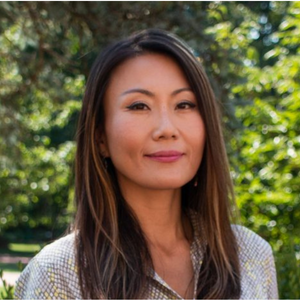 Minjeong Kang, Ph.D. (Mass Communication, Syracuse University) is an associate professor in The Media School at Indiana University, where she teaches public relations and internal communication management courses. Kang’s primary research has been centered on understanding engagement in various organizational stakeholder contexts such as volunteers, employees, consumers, etc. Kang’s research has received several national and international recognitions such as Emerald Publishing’s Literati Award of Excellence for Highly Commended for her 2017 publication in Journal of Communication Management, Gallup Korea’s Outstanding Research Award for her 2019 publication in Journal of Public Relations Research, and 2009 Ketchum Excellence in Public Relations Research Award by Institute of Public Relation for her research proposal on blog credibility.
...
Minjeong Kang, Ph.D. (Mass Communication, Syracuse University) is an associate professor in The Media School at Indiana University, where she teaches public relations and internal communication management courses. Kang’s primary research has been centered on understanding engagement in various organizational stakeholder contexts such as volunteers, employees, consumers, etc. Kang’s research has received several national and international recognitions such as Emerald Publishing’s Literati Award of Excellence for Highly Commended for her 2017 publication in Journal of Communication Management, Gallup Korea’s Outstanding Research Award for her 2019 publication in Journal of Public Relations Research, and 2009 Ketchum Excellence in Public Relations Research Award by Institute of Public Relation for her research proposal on blog credibility.
...

 Members of the IPR Measurement Commission gathered virtually to discuss new and innovative approaches to measurement. IPR Measurement Commission member Sarah Myles, Director of Communications Measurement & Insights at McDonald’s, moderated the discussion. Participants discussed how PR professionals can measure earned media to maximize value for their organizations. Key themes from the discussion include: — In terms of new approaches to measurement in communication, there is a movement toward understanding outcomes as opposed to just measuring output. —- Outcomes are the behavioral result of an organizational output. Outputs are the actions an organization takes to achieve a certain goal (BMC).— Aligning measurement objectives will help organizations measure what is meaningful for their decision-making. — Measurement experts said an overwhelming quantity of data was a consistent problem, as it makes it difficult for organizations to analyze and apply data.— Companies often have “too many tools” that are misused or not used at all. — Regarding the issue of data quantity, pushing the data together into one streamlined channel is not the solution: storytelling is. —- Half of measurement is the actual data; the other half is being able to break that information down into a message that is understandable for the audience. — Organizations can benefit from having designated measurement “ambassadors” to put the data into words for people outside of research teams.—- The goal is to make all the decision-makers of a company more data literate, increasing acumen and understanding.— Qualitative research and measurements are underutilized. They are very valuable in understanding what stakeholders want from an organization.— For the future of communications measurement, the experts said they believe that media will be a much less important player in understanding organizational outcomes in the future.— Developments with the Metaverse and AI are bound to impact measurement and professionals are still considering what this means for the future of the industry.
...
Members of the IPR Measurement Commission gathered virtually to discuss new and innovative approaches to measurement. IPR Measurement Commission member Sarah Myles, Director of Communications Measurement & Insights at McDonald’s, moderated the discussion. Participants discussed how PR professionals can measure earned media to maximize value for their organizations. Key themes from the discussion include: — In terms of new approaches to measurement in communication, there is a movement toward understanding outcomes as opposed to just measuring output. —- Outcomes are the behavioral result of an organizational output. Outputs are the actions an organization takes to achieve a certain goal (BMC).— Aligning measurement objectives will help organizations measure what is meaningful for their decision-making. — Measurement experts said an overwhelming quantity of data was a consistent problem, as it makes it difficult for organizations to analyze and apply data.— Companies often have “too many tools” that are misused or not used at all. — Regarding the issue of data quantity, pushing the data together into one streamlined channel is not the solution: storytelling is. —- Half of measurement is the actual data; the other half is being able to break that information down into a message that is understandable for the audience. — Organizations can benefit from having designated measurement “ambassadors” to put the data into words for people outside of research teams.—- The goal is to make all the decision-makers of a company more data literate, increasing acumen and understanding.— Qualitative research and measurements are underutilized. They are very valuable in understanding what stakeholders want from an organization.— For the future of communications measurement, the experts said they believe that media will be a much less important player in understanding organizational outcomes in the future.— Developments with the Metaverse and AI are bound to impact measurement and professionals are still considering what this means for the future of the industry.
...

 This blog is provided by the IPR Center for Diversity, Equity, and Inclusion.“Diversity fatigue” is a phenomenon that has garnered increased attention in recent years, particularly within academic and corporate settings. A research study by Jessi L. Smith and her colleagues defined diversity fatigue as “variation in the extent to which someone experiences a diminished response to or desensitization toward diversity efforts.” Their study offers a more nuanced definition and distinguishes between those who are and who are not on the front lines of diversity, equity, and inclusion (DEI) work. However, at its core, DEI fatigue refers to the emotional and psychological exhaustion individuals may experience when engaging in DEI-related activities or initiatives. This fatigue can manifest in a variety of ways, including feelings of burnout, frustration, and resentment. It is experienced by both those who may feel there is too much emphasis on DEI and those who feel responsible for driving DEI efforts forward.Multiple factors can contribute to DEI fatigue. One is the prevalence of microaggressions and other forms of discrimination within many organizations. Microaggressions are defined by Oxford Languages as indirect, subtle, or unintentional discrimination against members of a marginalized group. These experiences can be emotionally draining and may make individuals feel their efforts to promote DEI are unappreciated, unwelcomed, and futile. Additionally, these initiatives may place a disproportionate burden on those who identify as underrepresented or tasked with DEI work to educate their colleagues or advocate for their own inclusion constantly.Another factor that can contribute to DEI fatigue is the constant need or request to engage in difficult conversations about race, gender, disability, and other forms of diversity. According to a review on racial microaggressions research, these conversations can be emotionally taxing and may leave individuals feeling drained and overwhelmed. Furthermore, there may be a lack of institutional support for DEI efforts, which can further add to the sense of frustration and burnout individuals may experience, as noted in a Forbes article by Shelley Willingham.Broader societal factors can also contribute to DEI fatigue. For example, the ongoing prevalence of discrimination and prejudice within society can make it feel like DEI efforts aren’t working, as these issues are deeply entrenched and may seem insurmountable. Additionally, the pervasive nature of negative news, disinformation, and social media content related to DEI can lead to feelings of despair, overwhelm, and depression.For those who view DEI initiatives as “too much, too soon,” and are experiencing feelings of resentment toward the recent increase in discussion and efforts, the study by Smith and her colleagues attributes this resistance to a state experience known as system-justifying beliefs. System-justifying beliefs posit that the world is fair and good things happen to good people, so the blame is placed on the people rather than the system. They perceive discussion and/or ridicule of the system as ridicule of them; therefore, it becomes harder to understand or fully agree to the need for systemic change.Despite these challenges, it is important to recognize that DEI fatigue is a real and valid concern that should be addressed, and organizations should take steps to move forward. One way is to provide support and resources for individuals without judgment. This might include providing access to training, mentorship, and other forms of professional development, as well as creating a culture that values true inclusion.Another important step is to ensure DEI initiatives are inclusive and equitable. This means actively seeking input and participation from underrepresented individuals and ensuring their voices are heard and respected. It also means being mindful of the burden DEI efforts may place on certain individuals and making sure support is provided to ensure that these efforts are sustainable.Finally, it is important to recognize that DEI efforts are not one-time events or quick fixes. Instead, they require ongoing commitment, dedication, resources, and measurement/evaluation of efforts. This means being prepared for setbacks and challenges and being willing to continue the work of promoting DEI even when it is difficult. Leaders must be willing to listen to those who are experiencing DEI fatigue and who may be in a state of resentment. This also provides an opportunity to test the organization’s commitment to its DEI goals.In conclusion, DEI fatigue is a real and valid concern that can have serious consequences for individuals and organizations. Dr. Carolyn Thomas, Provost, California State University, Fullerton, said in her recent appearance on the Race in the PR Classroom series hosted by the Institute for Public Relations and PRSA Educators Academy that, “[Diversity] includes bursts of passion that we make space for,” which means that fatigue will happen, and DEI work is not a short-term commitment. By providing support and resources, ensuring that DEI initiatives are inclusive and equitable, and committing to ongoing efforts, organizations and individuals can work to mitigate the effects of DEI fatigue and promote a more diverse and inclusive society for all.
This blog is provided by the IPR Center for Diversity, Equity, and Inclusion.“Diversity fatigue” is a phenomenon that has garnered increased attention in recent years, particularly within academic and corporate settings. A research study by Jessi L. Smith and her colleagues defined diversity fatigue as “variation in the extent to which someone experiences a diminished response to or desensitization toward diversity efforts.” Their study offers a more nuanced definition and distinguishes between those who are and who are not on the front lines of diversity, equity, and inclusion (DEI) work. However, at its core, DEI fatigue refers to the emotional and psychological exhaustion individuals may experience when engaging in DEI-related activities or initiatives. This fatigue can manifest in a variety of ways, including feelings of burnout, frustration, and resentment. It is experienced by both those who may feel there is too much emphasis on DEI and those who feel responsible for driving DEI efforts forward.Multiple factors can contribute to DEI fatigue. One is the prevalence of microaggressions and other forms of discrimination within many organizations. Microaggressions are defined by Oxford Languages as indirect, subtle, or unintentional discrimination against members of a marginalized group. These experiences can be emotionally draining and may make individuals feel their efforts to promote DEI are unappreciated, unwelcomed, and futile. Additionally, these initiatives may place a disproportionate burden on those who identify as underrepresented or tasked with DEI work to educate their colleagues or advocate for their own inclusion constantly.Another factor that can contribute to DEI fatigue is the constant need or request to engage in difficult conversations about race, gender, disability, and other forms of diversity. According to a review on racial microaggressions research, these conversations can be emotionally taxing and may leave individuals feeling drained and overwhelmed. Furthermore, there may be a lack of institutional support for DEI efforts, which can further add to the sense of frustration and burnout individuals may experience, as noted in a Forbes article by Shelley Willingham.Broader societal factors can also contribute to DEI fatigue. For example, the ongoing prevalence of discrimination and prejudice within society can make it feel like DEI efforts aren’t working, as these issues are deeply entrenched and may seem insurmountable. Additionally, the pervasive nature of negative news, disinformation, and social media content related to DEI can lead to feelings of despair, overwhelm, and depression.For those who view DEI initiatives as “too much, too soon,” and are experiencing feelings of resentment toward the recent increase in discussion and efforts, the study by Smith and her colleagues attributes this resistance to a state experience known as system-justifying beliefs. System-justifying beliefs posit that the world is fair and good things happen to good people, so the blame is placed on the people rather than the system. They perceive discussion and/or ridicule of the system as ridicule of them; therefore, it becomes harder to understand or fully agree to the need for systemic change.Despite these challenges, it is important to recognize that DEI fatigue is a real and valid concern that should be addressed, and organizations should take steps to move forward. One way is to provide support and resources for individuals without judgment. This might include providing access to training, mentorship, and other forms of professional development, as well as creating a culture that values true inclusion.Another important step is to ensure DEI initiatives are inclusive and equitable. This means actively seeking input and participation from underrepresented individuals and ensuring their voices are heard and respected. It also means being mindful of the burden DEI efforts may place on certain individuals and making sure support is provided to ensure that these efforts are sustainable.Finally, it is important to recognize that DEI efforts are not one-time events or quick fixes. Instead, they require ongoing commitment, dedication, resources, and measurement/evaluation of efforts. This means being prepared for setbacks and challenges and being willing to continue the work of promoting DEI even when it is difficult. Leaders must be willing to listen to those who are experiencing DEI fatigue and who may be in a state of resentment. This also provides an opportunity to test the organization’s commitment to its DEI goals.In conclusion, DEI fatigue is a real and valid concern that can have serious consequences for individuals and organizations. Dr. Carolyn Thomas, Provost, California State University, Fullerton, said in her recent appearance on the Race in the PR Classroom series hosted by the Institute for Public Relations and PRSA Educators Academy that, “[Diversity] includes bursts of passion that we make space for,” which means that fatigue will happen, and DEI work is not a short-term commitment. By providing support and resources, ensuring that DEI initiatives are inclusive and equitable, and committing to ongoing efforts, organizations and individuals can work to mitigate the effects of DEI fatigue and promote a more diverse and inclusive society for all.
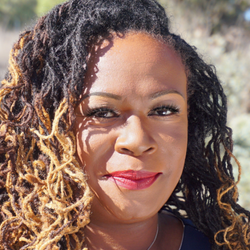 Anetra Henry is the senior director for strategic initiatives at the Institute for Public Relations.
...
Anetra Henry is the senior director for strategic initiatives at the Institute for Public Relations.
...
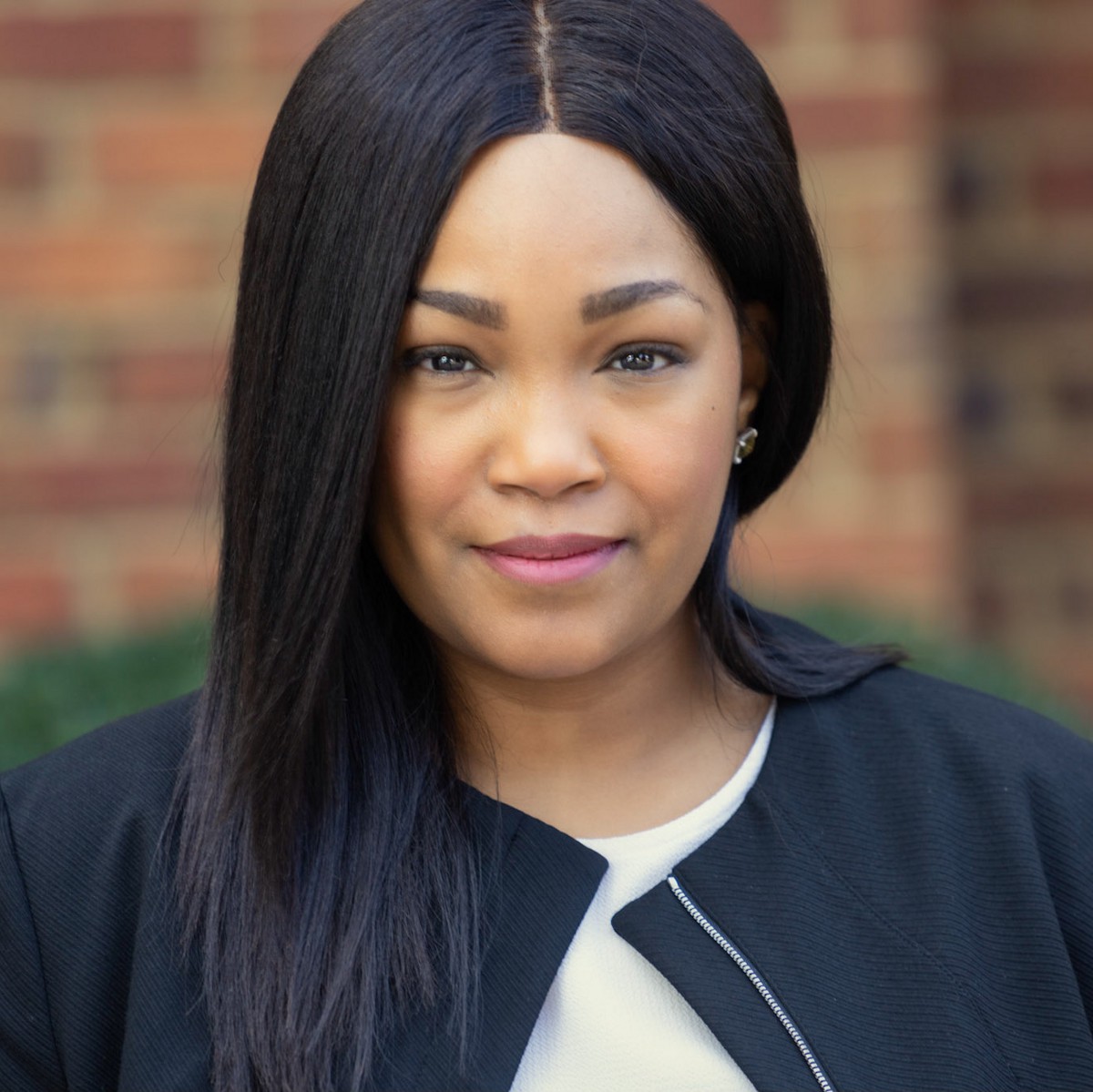
 As the incoming Chair of the IPR Board of Trustees, Yanique Woodall, looks to the future and shares what research priorities and upcoming programs IPR will focus on in 2023. It’s hard to believe we’re one full month into the new year. As communicators in our fast-paced, deadline-driven, and constantly evolving environments, time seems to move faster than the speed of light!As I reflect on 2022, I am incredibly grateful for the work IPR continues to contribute to the industry, and I am honored to continue to serve on the Executive Committee for the Board of Trustees. In the summer of 2017, a dear colleague, Stacey Tank, referred me to IPR, as she knew I truly valued the research behind our communications work. It’s been a rewarding experience since day one, and I continue to be amazed by the discussions and decisions made by fellow communications colleagues stemming from IPR’s research initiatives. IPR has such an influence on today’s most pressing and important topics for communications professionals.As I embark on 2023 as the new IPR Chair, I am looking forward to continuing to work with Tina (McCorkindale), Stacey (Jones), the newly appointed vice-chair Diana (Littman), the newly appointed treasurer Brett (Ludwig) and the phenomenal Board of Trustees to accelerate further IPR’s mission and commission breakthrough research that helps facilitate the most important discussion topics critical to today’s business operations. Most of all, I would like to thank Steve (Cody), our outgoing immediate past chair, for his leadership, dedication, and steadfast commitment to IPR and the industry. He has truly made remarkable contributions to our industry (and, plus anyone that spends time with him is guaranteed to have an enlightening and fulfilling discussion!).When I think about our goals for this year, I hope our industry can count on IPR for the following: valuable information that influences our most important decisions, professional development for tomorrow’s leaders, networking, and building a sense of community and peer-to-peer learning.Here are a few highlights that come to mind:— Peer-to-peer learning: IPR is offering its highly regarded IPR Master Class series with courses focused on employee engagement, change management, and combatting disinformation, as well as its cornerstone course, Strategic Playbook for Communicators.— Professional development for tomorrow’s leaders: We are seeking membership applications for IPR ELEVATE, a leadership community of 25 to 40 high-performing innovators and catalysts for growth, change, and advancement who support the mission and insights-focused work of IPR.— Valuable information that influences our most important decisions: IPR anticipates having its strongest research year yet with studies focused on employee engagement and mental health, disability in the workplace (a partnership with Voya Financial), the annual disinformation in society study, the relationship between Chief Communication Officers and Chief Diversity Officers, and climate change, among others.— Networking and building a sense of community: IPR is hosting its annual IPR Bridge Conference from March 22-23 at Georgetown University in Washington D.C. This event brings together the academy and the practice to share the latest in research and discuss the most critical and forward-looking issues impacting the field. A key feature of the conference is the opportunity to network and interact with top leaders in an intimate setting.Our industry continues to thrive, in large part due to the significant contribution of IPR over the years. I am looking forward to working with all of you—and I wish you the very best in 2023!Cheers!-Yanique
As the incoming Chair of the IPR Board of Trustees, Yanique Woodall, looks to the future and shares what research priorities and upcoming programs IPR will focus on in 2023. It’s hard to believe we’re one full month into the new year. As communicators in our fast-paced, deadline-driven, and constantly evolving environments, time seems to move faster than the speed of light!As I reflect on 2022, I am incredibly grateful for the work IPR continues to contribute to the industry, and I am honored to continue to serve on the Executive Committee for the Board of Trustees. In the summer of 2017, a dear colleague, Stacey Tank, referred me to IPR, as she knew I truly valued the research behind our communications work. It’s been a rewarding experience since day one, and I continue to be amazed by the discussions and decisions made by fellow communications colleagues stemming from IPR’s research initiatives. IPR has such an influence on today’s most pressing and important topics for communications professionals.As I embark on 2023 as the new IPR Chair, I am looking forward to continuing to work with Tina (McCorkindale), Stacey (Jones), the newly appointed vice-chair Diana (Littman), the newly appointed treasurer Brett (Ludwig) and the phenomenal Board of Trustees to accelerate further IPR’s mission and commission breakthrough research that helps facilitate the most important discussion topics critical to today’s business operations. Most of all, I would like to thank Steve (Cody), our outgoing immediate past chair, for his leadership, dedication, and steadfast commitment to IPR and the industry. He has truly made remarkable contributions to our industry (and, plus anyone that spends time with him is guaranteed to have an enlightening and fulfilling discussion!).When I think about our goals for this year, I hope our industry can count on IPR for the following: valuable information that influences our most important decisions, professional development for tomorrow’s leaders, networking, and building a sense of community and peer-to-peer learning.Here are a few highlights that come to mind:— Peer-to-peer learning: IPR is offering its highly regarded IPR Master Class series with courses focused on employee engagement, change management, and combatting disinformation, as well as its cornerstone course, Strategic Playbook for Communicators.— Professional development for tomorrow’s leaders: We are seeking membership applications for IPR ELEVATE, a leadership community of 25 to 40 high-performing innovators and catalysts for growth, change, and advancement who support the mission and insights-focused work of IPR.— Valuable information that influences our most important decisions: IPR anticipates having its strongest research year yet with studies focused on employee engagement and mental health, disability in the workplace (a partnership with Voya Financial), the annual disinformation in society study, the relationship between Chief Communication Officers and Chief Diversity Officers, and climate change, among others.— Networking and building a sense of community: IPR is hosting its annual IPR Bridge Conference from March 22-23 at Georgetown University in Washington D.C. This event brings together the academy and the practice to share the latest in research and discuss the most critical and forward-looking issues impacting the field. A key feature of the conference is the opportunity to network and interact with top leaders in an intimate setting.Our industry continues to thrive, in large part due to the significant contribution of IPR over the years. I am looking forward to working with all of you—and I wish you the very best in 2023!Cheers!-Yanique
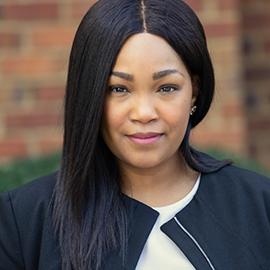 Yanique Woodall is Vice President of Communications and Customer Experience at CVS Health. She is Chair of the IPR Board of Trustees. Read Yanique’s full bio here!
...
Yanique Woodall is Vice President of Communications and Customer Experience at CVS Health. She is Chair of the IPR Board of Trustees. Read Yanique’s full bio here!
...

 EUPRERA outlined current practices and future developments in managing communication in companies, agencies, non-profits, and other organizations.A survey of 1,672 communication professionals in 43 countries throughout 2022.Key Findings:1.) Diversity, equality, and inclusion are influencing organizational policies and communications worldwide, but only 51% of communicators in Europe have closely followed global trends and discussions in this area.2.) Most practitioners have experienced empathic traits from communication leaders; this has a significant positive impact on commitment, engagement, and mental health.3.) Very few communication departments have established an advanced use of CommTech to digitalize internal workflows and communication activities.— Current organizational structures are identified as the main obstacle to rapid transformation.4.) Quality of consulting in communications is difficult to achieve.— 3-in-4 respondents would like to see appropriate standards that cover either consultants, clients themselves, or both groups.Find the original report here.
...
EUPRERA outlined current practices and future developments in managing communication in companies, agencies, non-profits, and other organizations.A survey of 1,672 communication professionals in 43 countries throughout 2022.Key Findings:1.) Diversity, equality, and inclusion are influencing organizational policies and communications worldwide, but only 51% of communicators in Europe have closely followed global trends and discussions in this area.2.) Most practitioners have experienced empathic traits from communication leaders; this has a significant positive impact on commitment, engagement, and mental health.3.) Very few communication departments have established an advanced use of CommTech to digitalize internal workflows and communication activities.— Current organizational structures are identified as the main obstacle to rapid transformation.4.) Quality of consulting in communications is difficult to achieve.— 3-in-4 respondents would like to see appropriate standards that cover either consultants, clients themselves, or both groups.Find the original report here.
...

 PRWeek and Cision examined how communication impacts all aspects of business now more than ever before.A survey of 440 senior-level professionals was conducted from Sept. 15 – Oct. 5, 2022.Key findings include:1.) 61% of global respondents said the “inability to measure impact effectively” was among their top four issues troubling strategic communicators the most.— 22% of respondents deemed this to be their top issue.2.) 70% of respondents said they are struggling to create content that is effective and 59% said they are struggling to distribute content.3.) 25% of global respondents said “content ideation/ strategy/creation” was the single-most important function when they consider using tech tools to boost their efforts.4.) When asked who had the power to persuade consumers, 41% of respondents said celebrities and 38% said everyday consumers (including family, friends, and strangers).Find the original report here.
...
PRWeek and Cision examined how communication impacts all aspects of business now more than ever before.A survey of 440 senior-level professionals was conducted from Sept. 15 – Oct. 5, 2022.Key findings include:1.) 61% of global respondents said the “inability to measure impact effectively” was among their top four issues troubling strategic communicators the most.— 22% of respondents deemed this to be their top issue.2.) 70% of respondents said they are struggling to create content that is effective and 59% said they are struggling to distribute content.3.) 25% of global respondents said “content ideation/ strategy/creation” was the single-most important function when they consider using tech tools to boost their efforts.4.) When asked who had the power to persuade consumers, 41% of respondents said celebrities and 38% said everyday consumers (including family, friends, and strangers).Find the original report here.
...

 Dr. Chen and colleagues explored the role that social media influencers played an important role in driving positive outcomes of corporate social responsibility (CSR) campaigns.A survey of 967 participants was conducted in June 2019.Key findings include:1.) Social media influencers exert influence on the target consumers’ decisions to support the CSR initiative which they have endorsed when they are perceived as opinion and taste leaders by the consumers.— Social media influencers’ taste leadership had a greater impact on CSR supportive behavior than their opinion leadership did.2.) Social media influencer leadership over customers is formed by perceived trustworthiness, expertise, uniqueness, and congruity.— Congruity, directly and indirectly, affected consumers’ CSR-supportive behavior.3.) Visually appealing content that displays good taste or establishes a style congruent with the social platform’s norms draws the public’s attention and triggers their heuristics of “realism,” “urgency,” or “coolness,” thereby increasing their cognitive and affective engagement with the content and the social media influencers in general.Find the original journal article here.
...
Dr. Chen and colleagues explored the role that social media influencers played an important role in driving positive outcomes of corporate social responsibility (CSR) campaigns.A survey of 967 participants was conducted in June 2019.Key findings include:1.) Social media influencers exert influence on the target consumers’ decisions to support the CSR initiative which they have endorsed when they are perceived as opinion and taste leaders by the consumers.— Social media influencers’ taste leadership had a greater impact on CSR supportive behavior than their opinion leadership did.2.) Social media influencer leadership over customers is formed by perceived trustworthiness, expertise, uniqueness, and congruity.— Congruity, directly and indirectly, affected consumers’ CSR-supportive behavior.3.) Visually appealing content that displays good taste or establishes a style congruent with the social platform’s norms draws the public’s attention and triggers their heuristics of “realism,” “urgency,” or “coolness,” thereby increasing their cognitive and affective engagement with the content and the social media influencers in general.Find the original journal article here.
...
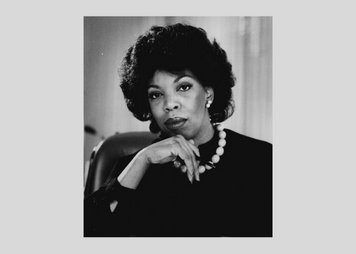
 IPR is featuring some of the many Black pioneers who have had an impact on the field of public relations in celebration of Black History Month.Barbara Gardner Proctor was born on Nov. 30, 1932, in Black Mountain, N.C. She grew up in an impoverished neighborhood there without electricity or running water. After graduating in 1950 she attended historically Black Talladega College in Alabama, earning a degree in English and education after three years, then staying an additional year to earn a degree in psychology and sociology.Proctor did social work with the Urban League in Chicago for about a year and then fell into a completely different line of work. She often listened to the radio while working late, which led to a shift in her career. Proctor began writing liner notes for Vee-Jay Records which scouted local jazz talent in Chicago. In 1962, she traded records by the Beatles, who had not yet made an impact in the United States, and arranged for Vee-Jay to sign the group to a limited contract.In 1964, Proctor took a job with the Post-Keyes-Gardner advertising agency, which forced her to begin using her married name, Proctor. Years later, Proctor founded her own advertising agency called Proctor & Gardner. She was the first African-American woman to establish her own advertising agency in the US.Just a few of her clients included Kraft Foods, Sears, and Roebuck & Company. Proctor cared deeply about whom she represented and refused to represent products such as cigarettes and hard liquor products. In early 1984, “60 Minutes” broadcasted a segment about her, and a few weeks later, President Ronald Reagan mentioned her success as a business successful woman who started from very little.Barbara Gardner Proctor died at age 86 on Dec. 19 in Chicago. Her survivors include a son, Morgan Proctor, and two grandchildren. Proctor’s success as the first Black woman to create her own advertising agency continues to be exclusionary.ReferencesBarbara Gardner Proctor, Barrier-Breaking Ad Executive, Dies at 86The New York TimesBarbara Proctor, the First African-American Woman to Own an Ad Agency, Dies at 86The Washington Post
...
IPR is featuring some of the many Black pioneers who have had an impact on the field of public relations in celebration of Black History Month.Barbara Gardner Proctor was born on Nov. 30, 1932, in Black Mountain, N.C. She grew up in an impoverished neighborhood there without electricity or running water. After graduating in 1950 she attended historically Black Talladega College in Alabama, earning a degree in English and education after three years, then staying an additional year to earn a degree in psychology and sociology.Proctor did social work with the Urban League in Chicago for about a year and then fell into a completely different line of work. She often listened to the radio while working late, which led to a shift in her career. Proctor began writing liner notes for Vee-Jay Records which scouted local jazz talent in Chicago. In 1962, she traded records by the Beatles, who had not yet made an impact in the United States, and arranged for Vee-Jay to sign the group to a limited contract.In 1964, Proctor took a job with the Post-Keyes-Gardner advertising agency, which forced her to begin using her married name, Proctor. Years later, Proctor founded her own advertising agency called Proctor & Gardner. She was the first African-American woman to establish her own advertising agency in the US.Just a few of her clients included Kraft Foods, Sears, and Roebuck & Company. Proctor cared deeply about whom she represented and refused to represent products such as cigarettes and hard liquor products. In early 1984, “60 Minutes” broadcasted a segment about her, and a few weeks later, President Ronald Reagan mentioned her success as a business successful woman who started from very little.Barbara Gardner Proctor died at age 86 on Dec. 19 in Chicago. Her survivors include a son, Morgan Proctor, and two grandchildren. Proctor’s success as the first Black woman to create her own advertising agency continues to be exclusionary.ReferencesBarbara Gardner Proctor, Barrier-Breaking Ad Executive, Dies at 86The New York TimesBarbara Proctor, the First African-American Woman to Own an Ad Agency, Dies at 86The Washington Post
...

 Morning Consult examined how American society, culture, and politics are perceived around the world.A survey of 1,000 people from 17 countries was conducted from October – December 2022.Key findings include:1.) English-speaking countries that are predominantly white had the highest negative perceptions of race relations in the United States.— 57% of Canadians, 55% of those from the UK, and 53% of Australians said that race relations in the US were “poor” or “terrible.”2.) Views were more mixed in wealthy non-English speaking countries.— Just under half of the respondents in Japan and France rated U.S. race relations as “poor” or “terrible.”3.) In 14 of the 17 countries surveyed, the share of adults who said “people with darker skin are treated worse by ordinary people in the United States” than in their own countries exceeded the share who said people with darker skin are treated “better” or “about the same.”Find the original report here.
...
Morning Consult examined how American society, culture, and politics are perceived around the world.A survey of 1,000 people from 17 countries was conducted from October – December 2022.Key findings include:1.) English-speaking countries that are predominantly white had the highest negative perceptions of race relations in the United States.— 57% of Canadians, 55% of those from the UK, and 53% of Australians said that race relations in the US were “poor” or “terrible.”2.) Views were more mixed in wealthy non-English speaking countries.— Just under half of the respondents in Japan and France rated U.S. race relations as “poor” or “terrible.”3.) In 14 of the 17 countries surveyed, the share of adults who said “people with darker skin are treated worse by ordinary people in the United States” than in their own countries exceeded the share who said people with darker skin are treated “better” or “about the same.”Find the original report here.
...